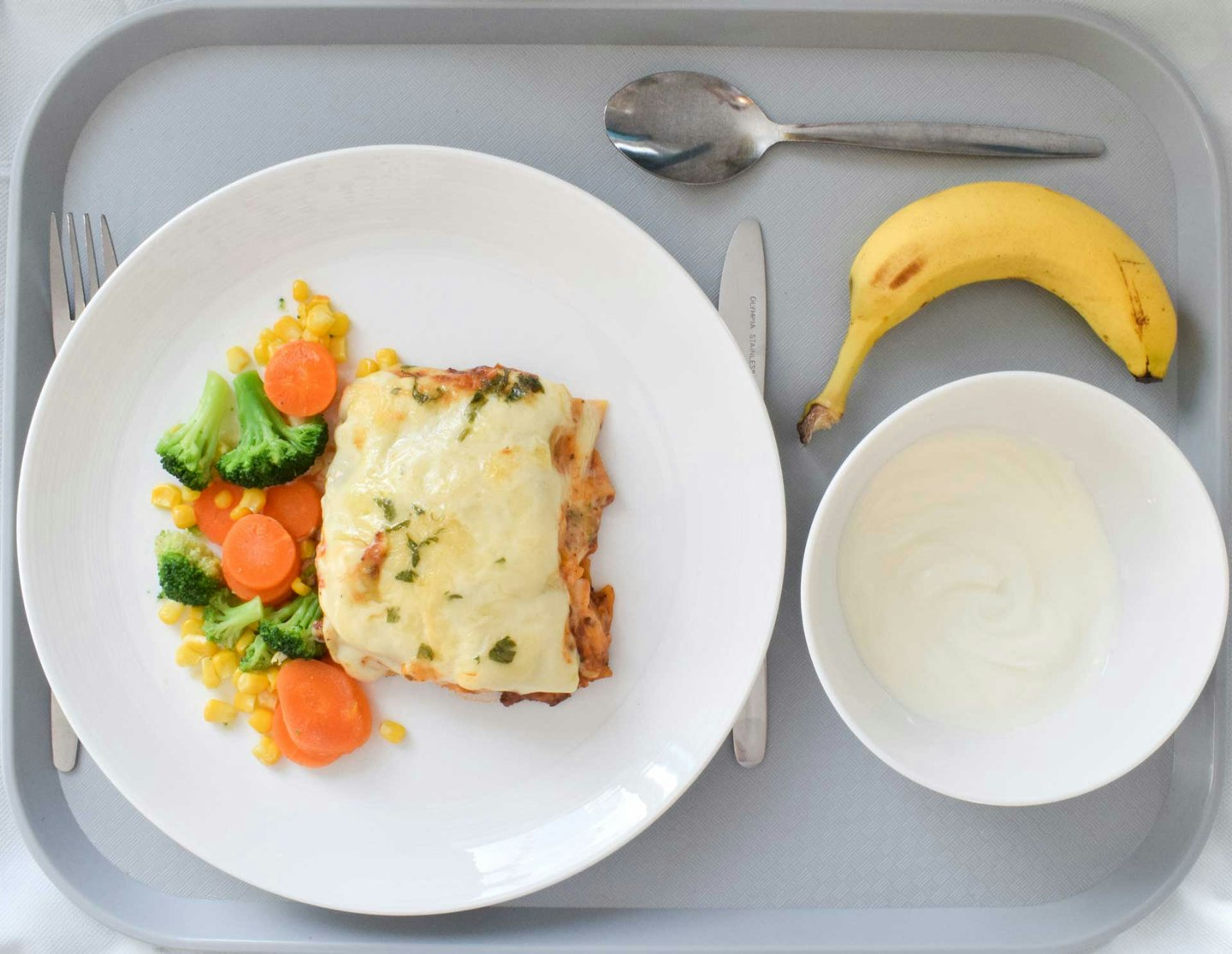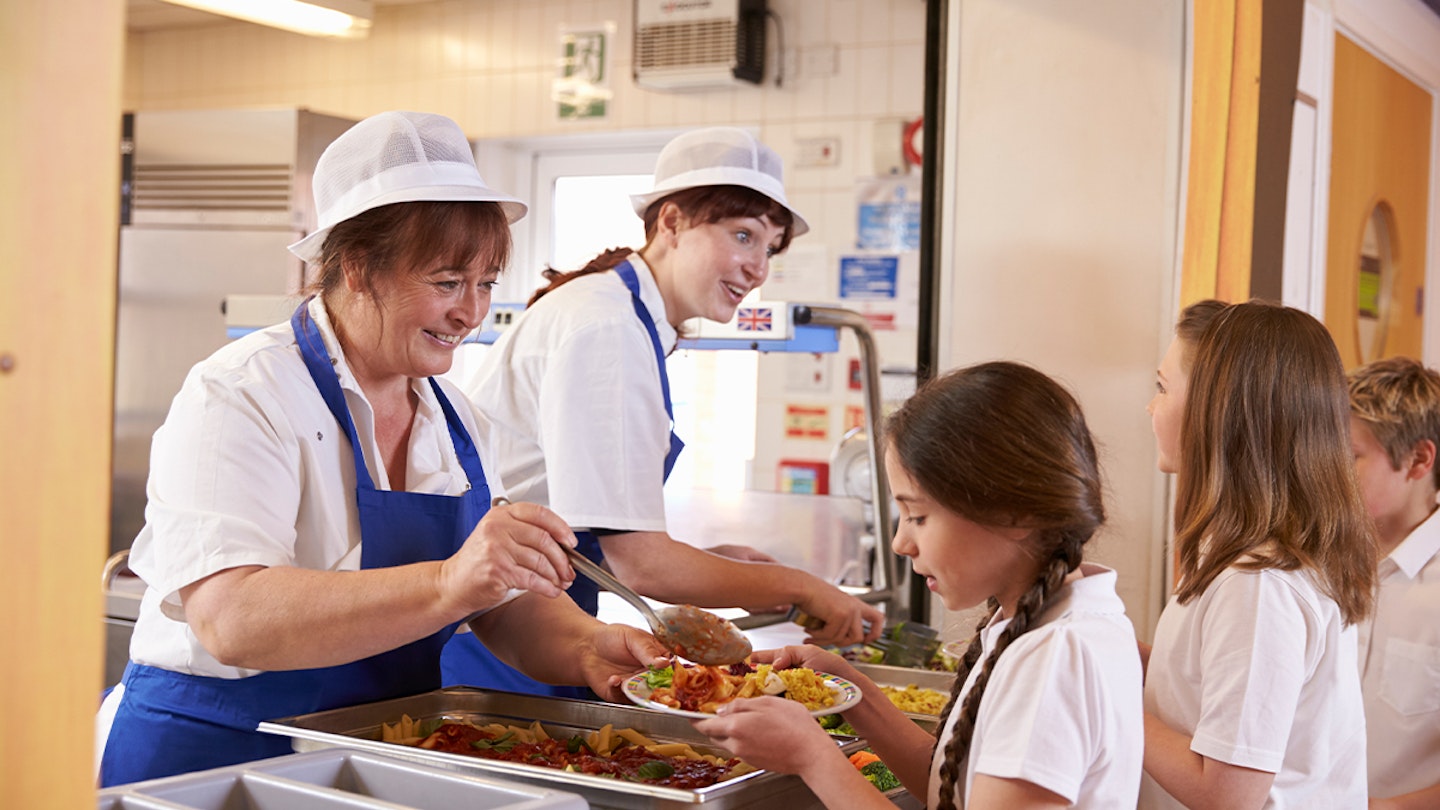If there is one thing everyone in Britain has in common, it is their nostalgia for school dinners. There is no denying that there has been a massive school dinner evolution over the last century.
Food shortages in the war led to tinned food becoming the heart of school lunches, and a rise in takeaways and ‘beige food’ meant that Turkey Twizzlers and pizzas were the main dishes of the day.
From a nutritional standpoint, school lunches today have come leaps and bounds thanks to Jamie Oliver’s campaigning. However, there's no harm in getting nostalgic about the retro and not-so-healthy school foods such as square pizza slices, chocolate concrete with pink custard, jam roly-polys and turkey dinosaurs that are ingrained so deep in our childhood memories.
Here is an evolution of school dinners since the 1940s. What were your favourites?
40s school dinners
With wars and rations in place, food shortages greatly affected school dinners. With most meals coming out of a can, foods such as spam, peas, potatoes and rice pudding were reoccurring dishes in the canteen.
"The balance is truly present during this era; vegetables, potatoes and plenty of protein for a growing child," reports nutritionist Xander Pipe on 40s school meals.
"Although there wasn't a choice in those days, this would result in plenty of focus due to the amount of nutrients available, and certainly, the vegetables were all fresh and locally sourced."
Main meal: Spam fritters, peas, mashed potatoes and cheese and potato pies
Dessert: Rice pudding and jam
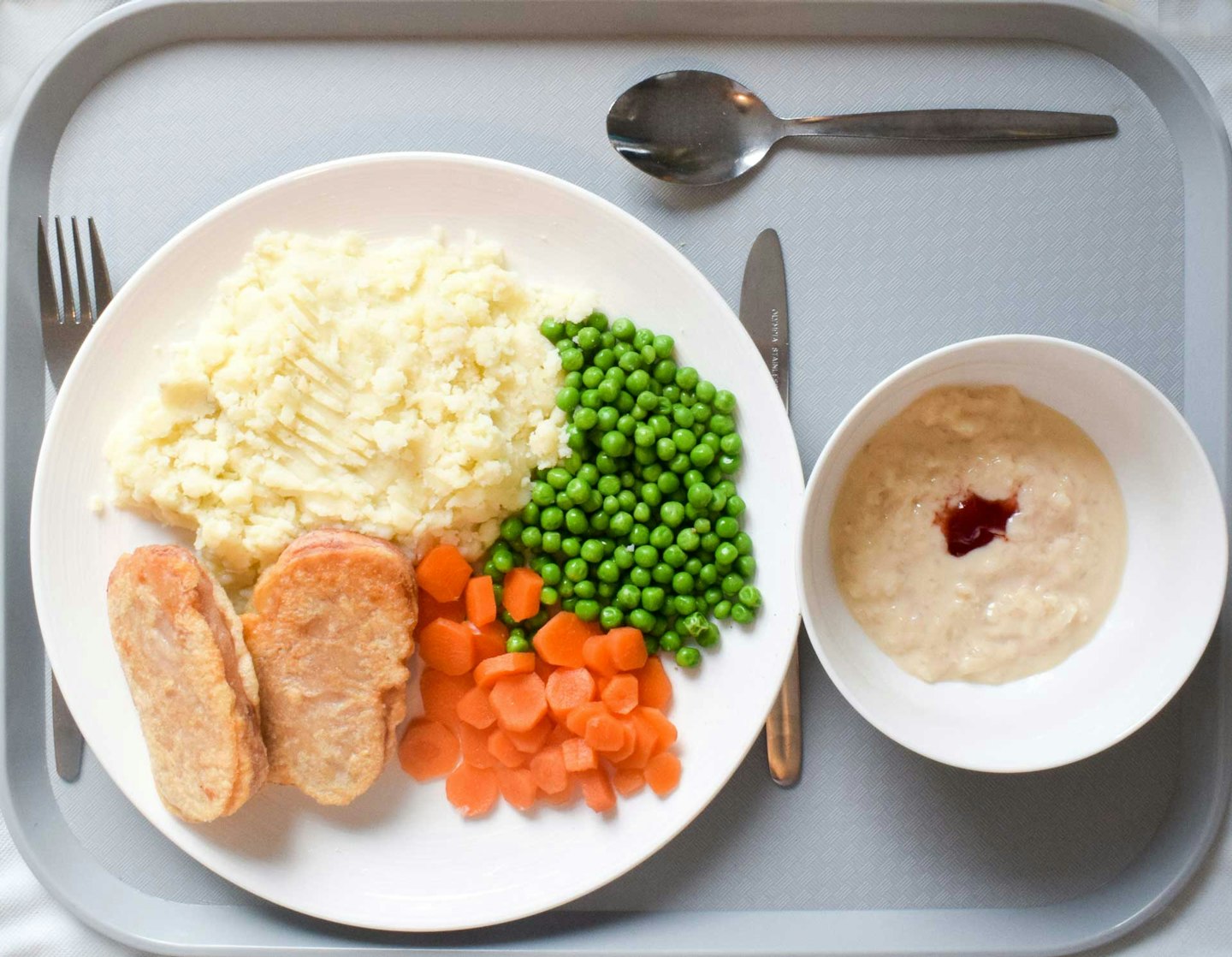
50s school dinners
In the mid-1950s, Britain still faced food shortages, but thankfully rationing had come to an end. This paved the way for more meat and produce on the menu, however, it was not always fresh and mostly delivered pre-prepared to schools.
Roasts were also first placed on the menu in the 40s, but you had to pay extra, however, they became a staple meal in the 50s. Growing up in this time, meat and two veg were an absolute must!
"Meals here still maintain their balance, high protein, good carbohydrates for energy and enough vegetables to provide children in those days with enough vitamins and nutrients to grow healthily whilst focusing on school," Xander Pipe adds.
Main meal: Minced beef, peas, boiled or mashed potatoes, Steak and kidney pie, shepherd’s pie, served with greens
Dessert: Jam roly-poly
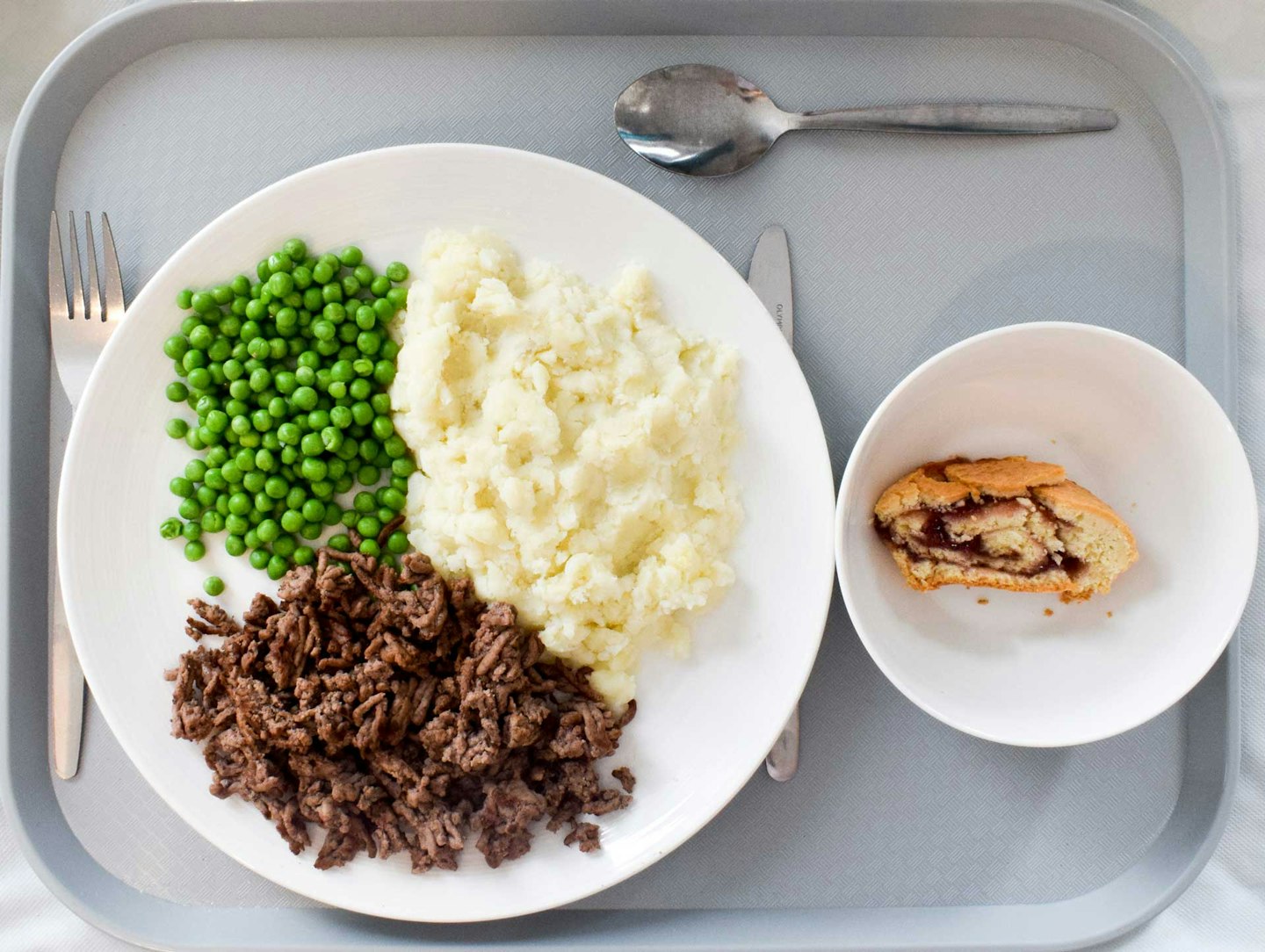
60s school dinners
The 60s paved way for more balanced and nutritious school meals. Yet, the main purpose of these meals was that they were simple to prepare. As convenience took the forefront, the importance of a ‘proper meal’ took a back seat.
However, not everyone felt nostalgic for their childhood lunches. One woman on Gransnet.com, reflects on her school dinners in the 60s and remembers having spaghetti pie – made of a shortcrust pastry filled with tinned spaghetti. She said, "When I was at school some of the disgusting excuses for food were almost inedible."
Main meal: Hotpot with swede, liver and mash, stew, corned beef, liver, bacon and boiled dried eggs
Dessert: Wells pudding and custard, rice pudding with a dollop of jam and sponge cake and pink custard.
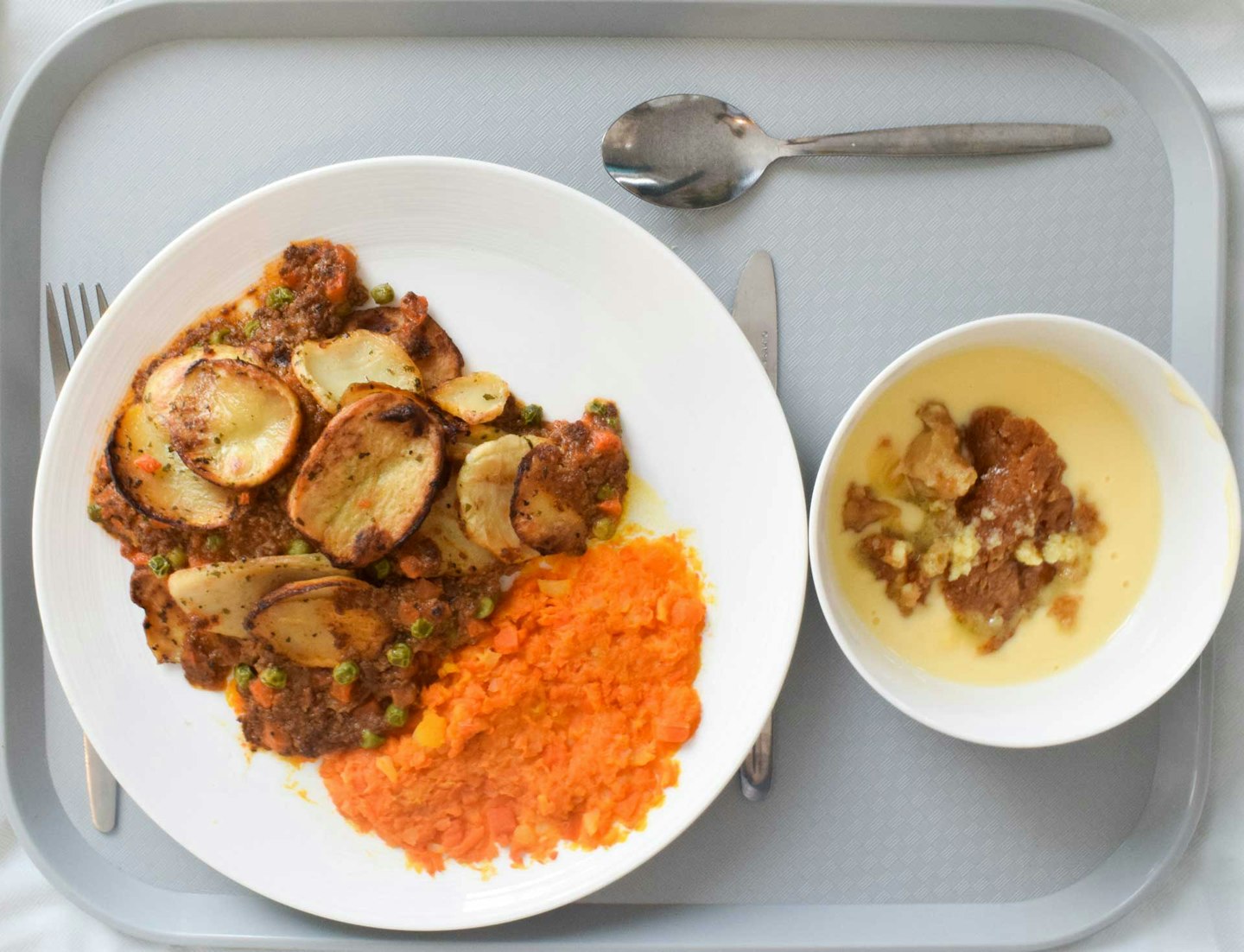
70s school dinners
The school dinners from the 1970s are often categorised as being “stodgy”. With a rise in takeaway options such as fish and chips, school meals started to become more processed.
However, children during the time had little complaints about the delicious high sugar foods.
One person states on a forum onDigitalspy.com that: “Our school dinners were great in the 70s. My favourite was the meat and tater pie we used to get. God, it was lovely. Ditto the savoury mince and spuds. I also liked the liver and onions. The puddings especially were epic, as has been said. Manchester Tart, sponge and pink custard, semolina and a splodge of jam. All really nice, I always thought.”
Main meal: Fish and chips with peas, cheese flan salad, chicken casserole liver and mashed potatoes
Dessert: Jelly and Ice cream, apple with crackers, lemon curd pie with a dollop of cream and jam roly-poly with custard
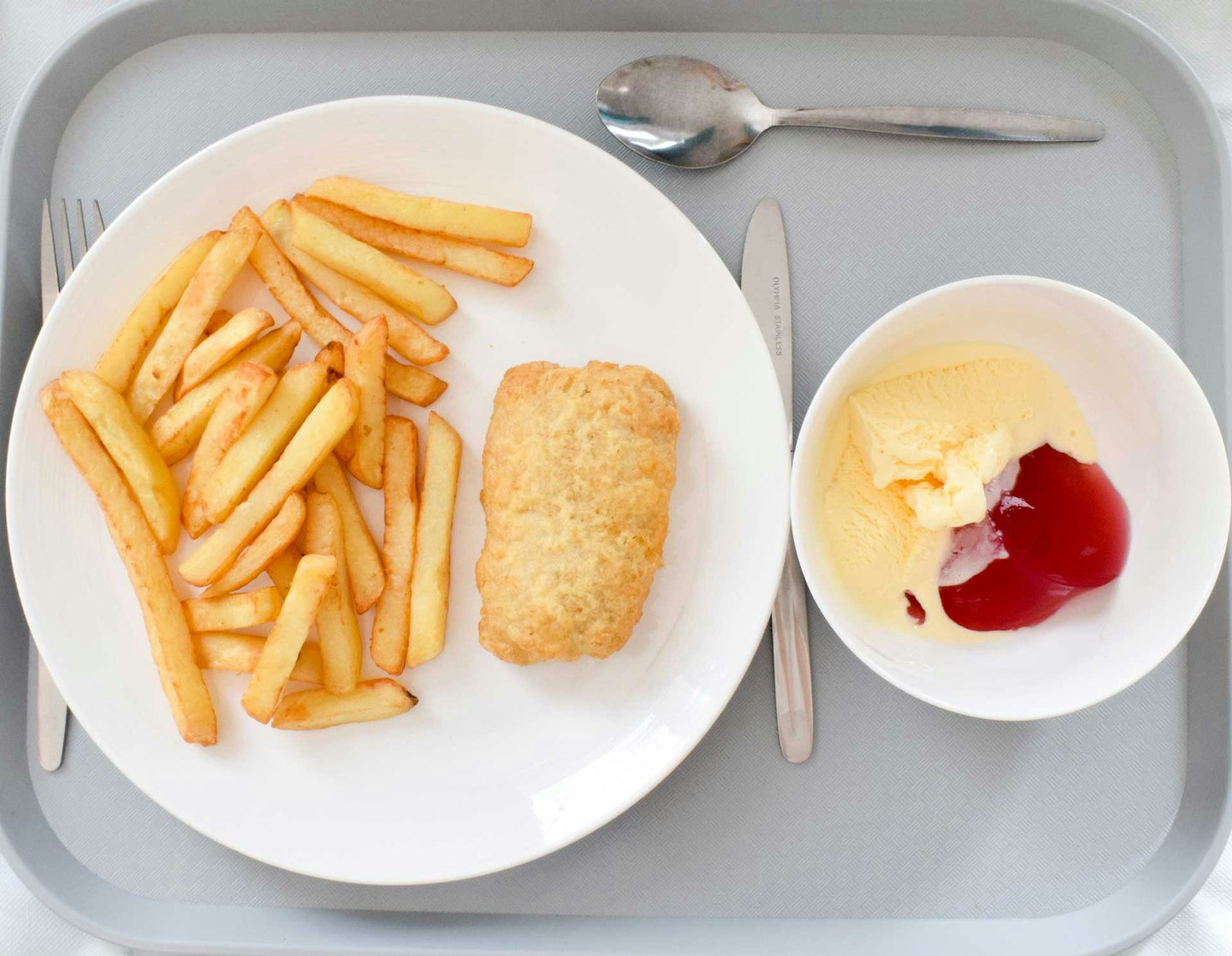
80s school dinners
When Margaret Thatcher came to power, free school dinners came to an end for thousands of families across the UK, leading to a drastic drop in the quality and nutritional value of lunches. This meant that dinners consisted of cheaper options such as potato smiley faces, chocolate cake and custard-filled desserts, with little greenery on their plates.
Although many retro favourites such as turkey Twizzlers and turkey dinosaurs became popular during this time, ‘the 80s were not the prime time for health and wellbeing’ states Xander. According to the nationwide study, commissioned by Vue cinemas, eight per cent of study participants ranked turkey dinosaurs as one of the nation’s top 40 nostalgic foods.
The 80s also marked the rise of packed lunches, maybe due to the lack of nutritious options at school. Many 80s retro lunch boxes are seen as collectables today. It might be worthwhile looking to see if you have one in your attic!
Main: Turkey Twizzlers, potato faces and baked beans, fish and chips, mince and dumplings.
Dessert: Sponge cake with icing, sprinkles and custard, flapjacks and cornflake cake.

90s school dinners
The Institute of Child Health discovered that the majority of pre-school children were eating a diet made up of mostly white bread, chips, crisps and sweets by 1999. Rates of obesity had doubled between 1980 and 2000.
Xander comments that meals in the 90s were, "Beige, the colour of dreams and pure energy. Pizza, chips and pudding welcome low performance and a body that isn't fed with any vitamins. These were the types of dishes that demanded change after children showed little desire for learning."m
Main meal: Rectangle pizza with chips, sausages, hot dogs, spaghetti and burgers or packed lunch favourites such as Dairylea Lunchables, Frubes, Wagon Wheels and Kellogg's Fruit Winders.
Dessert: Arctic roll
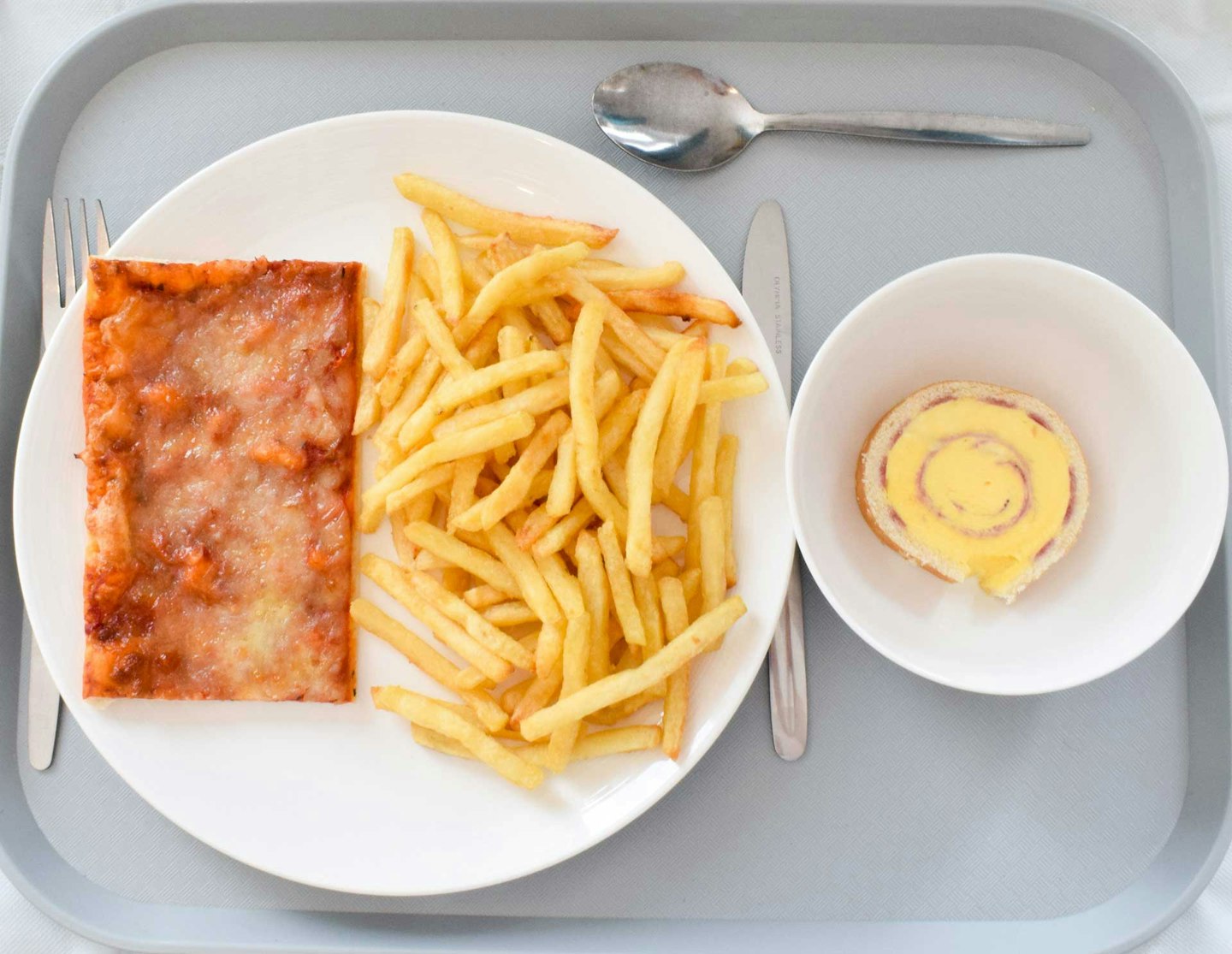
2000s school dinners
As the 90s had reached the height of junk food, the 2000s saw a great shift in school dinners when Jamie Oliver revamped meals to become more nutritious and substantial. "Jamie Oliver ignited a fire that did gain traction within schools, more vegetables are introduced here," Xander says.
In 2005, Jamie Oliver was on a mission to increase the standards of school meals served after recognising the lack of acceptable guidelines in place, especially concerning the level of saturated fat, salt and sugar present in many of the highly processed foods being served to children.
Main: Lasagne and mixed vegetables, fish curry, bean wraps and nutritious pasta dishes and salads
Dessert: Banana and yoghurt
